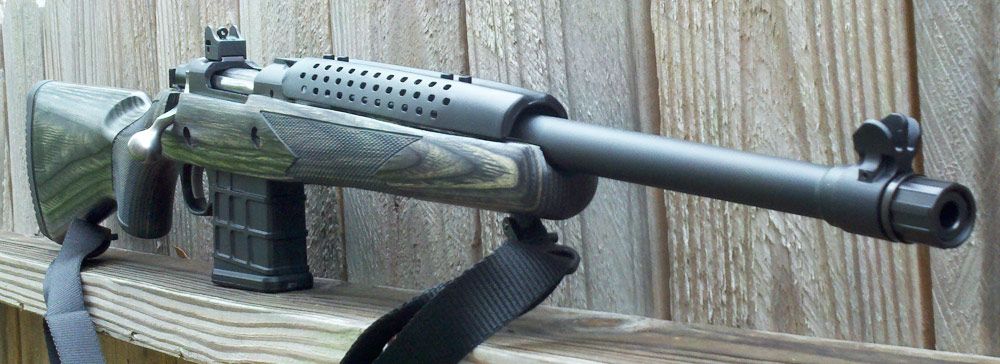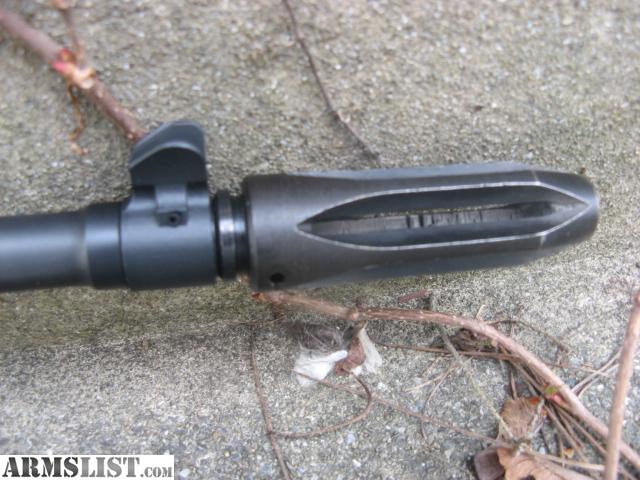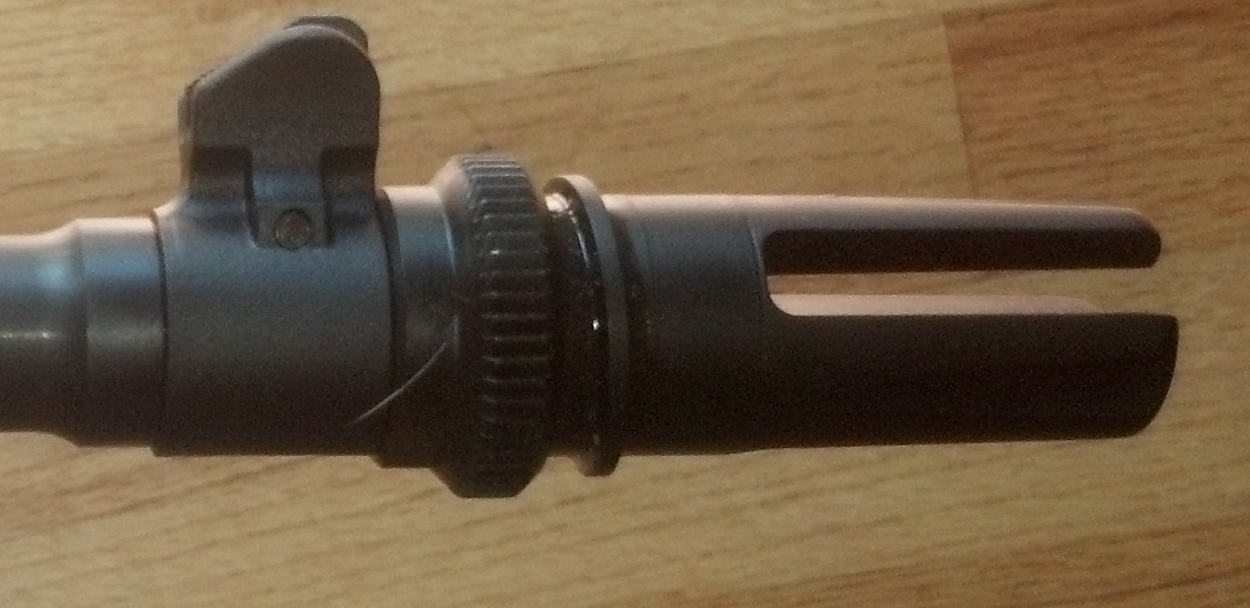Liberty wrote:Why a brake? I understand it may reduce the flash, but the recoil on the GSR seems pretty minimal, and any verticle lift would be inconsequential because it's a bolt action and you will have to re-aim follow up shots anyway.
BTW: how much noise reduction did you actually get? Seems like the sonic boom would be as loud as the exhaust from the barrel. I was fascinated by your project and it looks great. But I did wonder how much effect it had on quiting the beast.
Well, the EOM birdcage flashhider also had a slight compensator effect to counter muzzle rise - much like the A2 birdcage flashhiders for ARs. No, the GSR is not an extremely heavy kicker, but it kicks more than my R700 for instance because of the base weight of 7 lbs + scope & rings, compared to the Remington's 10 lbs + scope and rings. Shoot 60-80 rounds of .308 in a 7 lb rifle, and you're going to feel it.
Compare the GSR to a FN SCAR 17. The SCAR weighs 8 lbs - a lb more than the RGS, and it comes from the factory with a muzzle brake, which makes a huge difference. My SCAR kicks nowhere near as hard as the Ruger. Both are .308s. Both have 16" barrels, with the RGS having the heavier barrel (which ought to mitigate recoil some). A muzzle brake makes for a more pleasant shooting experience.
Noice reduction for the .308 is fairly significant, just like it is for a 5.56. There's still a supersonic bullet's crack, but the muzzle blast is very attenuated. When I recorded this video of my son, shooting his .308 Savage with a Form 1 can, I was NOT wearing ear pro, and neither was my son:
https://www.youtube.com/watch?v=VxvsecSOQJY
Same day, same suppressor, on my SCAR 17. Again, neither of us were wearing ear pro:
https://www.youtube.com/watch?v=CAgH6G1Du9Y
I don't have any video of the noise suppression for my RGS, but it is similar to the above videos. You
can shoot without ear pro, although I wouldn't recommend doing it in a confined space. On the above range (ETTS), those shots were fired in a outdoor tactical bay, probably about 40-50 yards wide, and around 75 yards deep, with sloping earthen berms on either side and no roof, firing into a sloped hillside. The
same guns, with the same suppressors, fired at the outdoor 50 yard range at Elm Fork, where there is a roof over the firing line, a solid wall down either side of the range, and firing into a berm that has a roof over it, the sound is much more contained, and the bullet crack is sharper and seems a bit louder. That range requires ear pro, but mine are the amplified kind so you can hear human speech clearly without raising your voice, while they still attenuate the muzzle report. But, if I were hunting, I wouldn't hesitate to shoot without ear pro and a suppressed .308.......as long as I was
behind the rifle. My guess is that if you're off to the side, or (heaven forbid) down range, it may seem somewhat louder; although the tactical advantage of a suppressor isn't that it makes the muzzle report undetectable, but rather that it makes it sound so diffuse that it would be much more difficult to locate a suppressed rifle that was shooting at you, rather than one unsuppressed.
I will add that trying to suppress a Ruger Gunsite Scout is a more complicated process than other rifles because (A) the front sight is located right up against the shoulder of the threaded portion of the barrel, which prevents some muzzle devices from being mounted fully onto the rifle. With mine, the bushing is about 3/8"-1/3" or so long (I don't remember the exact value), which allows the flashhider to stand off from the sight blade. Without the sight blade there, the inside diameter of the flashhider would actually contain the first 3/8-1/2" of barrel aft of the threads. But, because the front sight prevents it from threading on all the way, only about half of the threads are available to mount the flashhider. The obvious solution, but more than I want to take on, would be to remove the front sight entirely, and replace it with one that fits a 1/2" or so further back. But as is, the flashhider - and therefore the suppressor too - is perhaps not as securely mounted as it might be. I used a bore guide to verify concentricity with the bore of the can. It isn't perfect. Although it is plenty clear enough to not cause a baffle strike, it is out of concentricity enough to cause a very noticeable shift in POI when mounting or dismounting the suppressor. My other suppressed rifles don't have that problem.
I really do like the RGS a lot, but I'm not entirely satisfied with the project of suppressing it, and I am considering giving up and just mounting a good muzzle brake. Down the road, I may rebarrel it with a less tapered barrel profile, still keeping it to 16"-18" in length, and have the gunsmith cut a dovetail in the barrel to mount a different front sight, and have it just far enough back to negate the flashhider/suppressor problem. But, that's likely to cost a pretty penny, so I won't be tackling that for a while.



